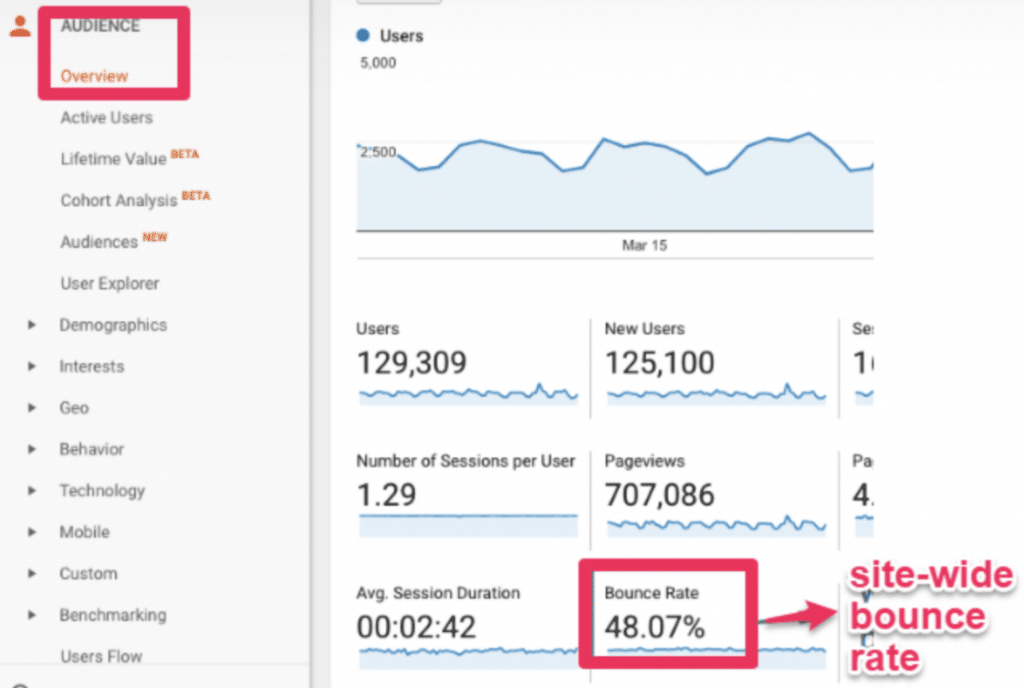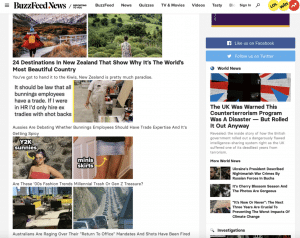Bounce rate relates to the time it takes for an end-user to click off a page on your website. The lower the bounce rate, the better. A lower bounce rate on a content website means people are staying longer on your website, exploring the webpages of your site, so they aren’t leaving (bouncing) as fast. On the flip side, high bounce rates mean users are constantly clicking on and off your pages very fast. This may mean users aren’t actually reading the pages. This is especially common in content websites.
You may be thinking, what is a good bounce rate? What is achievable? What is the norm? Well, to put it simply, an excellent bounce rate would be between 30-50%. If you are getting between 50-70%, you’re about average. Between 70-80% is poor and suggests it needs improvement. Lastly, if it is above 80%, the bounce rate is really bad and needs work ASAP. Also, just as a PSA, anything below 20% may be due to an error in calculations. So, if you are scoring in this range, improvements also need to be made.
Unfortunately, most content websites have a bounce rate of 60%. Although 60% lies within the average bounce rate, it seems very high. That means 60% of people simply click off a content website, the second after they’ve clicked on it. Content websites are some of the common websites. These include websites primarily focused on blogs, news, podcasts, images, videos and all related items.
Since high bounce rates affect so many websites, one would wonder, what is the common issue between them? Well, there are many reasons. Here are just a few:
Firstly, lots of website creators just want to add as many different pages to their website as possible. They aren’t worried about the quality, or what is being published. This can lead to random information being posted that has no relation to the brand you are trying to create. These random pages may contain unuseful key terms that don’t help in SEO page rankings on Google or attract the wrong audience. Due to this, readers become confused and just simply leave the page quickly.
Many websites are generalists, meaning they report on absolutely everything and anything. This can work in certain cases such as BuzzFeed or well-known newspapers like The New York Times. However, for many websites, it is important to focus on one specific area such as fashion, music, history, etc. When a website has content on many different topics, readers get confused. They don’t know what your website is really about. They don’t know why they would ever come back to your website. And they won’t know if the website is reputable because how can one website be an expert in absolutely everything. This is why it is so important to have content pillars where you select a few different topics of sub-topics to create pages on your website.
Whilst images and videos are important, they can sometimes be a hindrance. It’s so common to just add in a random picture that is slightly related to the topic of the page. This can work if it fits within the tone of the rest of the page. For example, if the whole page is very neutral in colour, then adding a bolder image can work. However, many people want their website to be super flashy so they will not only have a very intense background but will also add in some loud, noisy videos or vibrant pictures. This takes away from the rest of the content on the page and makes it unappealing for readers.
Similarly, pop-ups are so commonly misused on websites, causing users to bounce pretty fast. They can be a useful tool to have every so often on your website to bring users’ attention to different pages or to subscribe. However, when there are too many, users become annoyed and intolerant. Because they can become so annoying, users lose patience and simply click off the website as a whole, even if the content is really good.
To sum up, many content websites have small flaws that substantially increase their bounce rate. Content websites that are sitting around the 60% bounce-rate margin, should consider making some changes. Creators should remember quality over quantity. There is no need to create content on random things that are irrelevant to users. Similarly, make sure all images, videos and pop-ups are purposeful and not overpowering. By conducting a small audit of your site, and checking for these main issues, you should see your bounce-rate improving.
If you enjoyed today’s content, consider checking SEO Company Melbourne and our wide array of expert SEO-related content to help you achieve more today!





